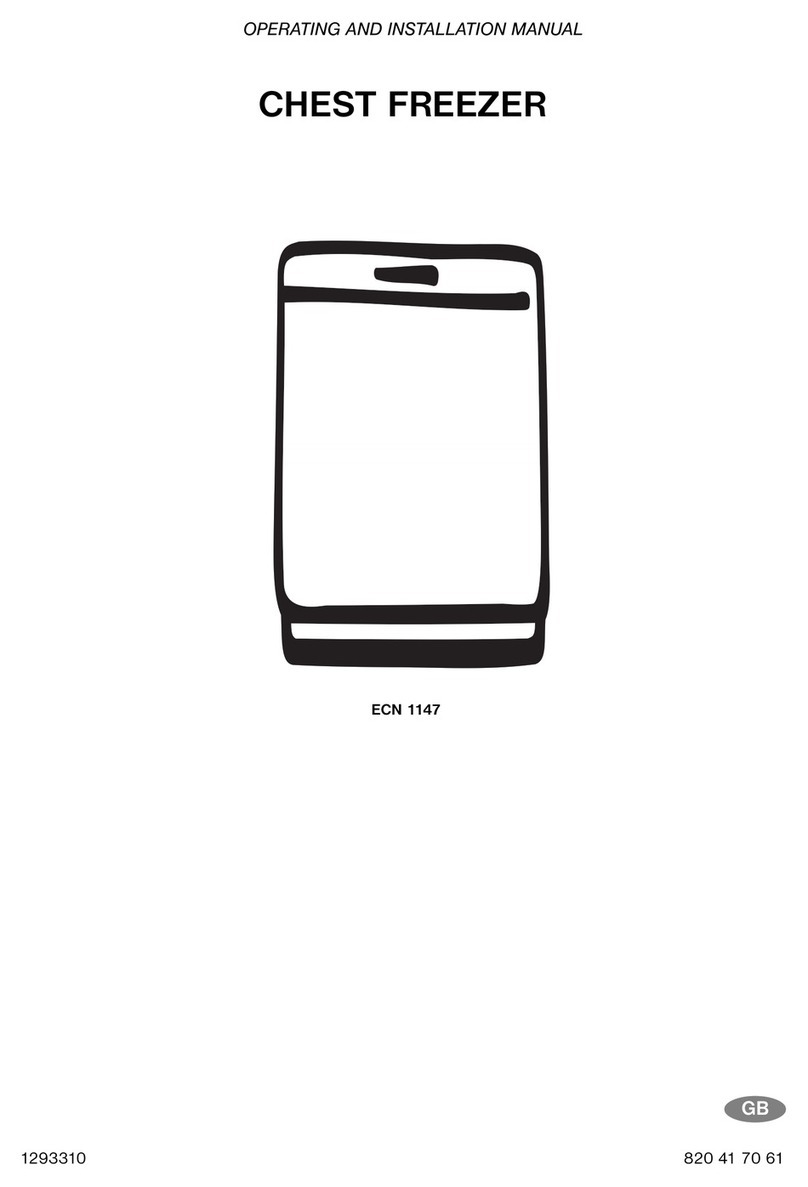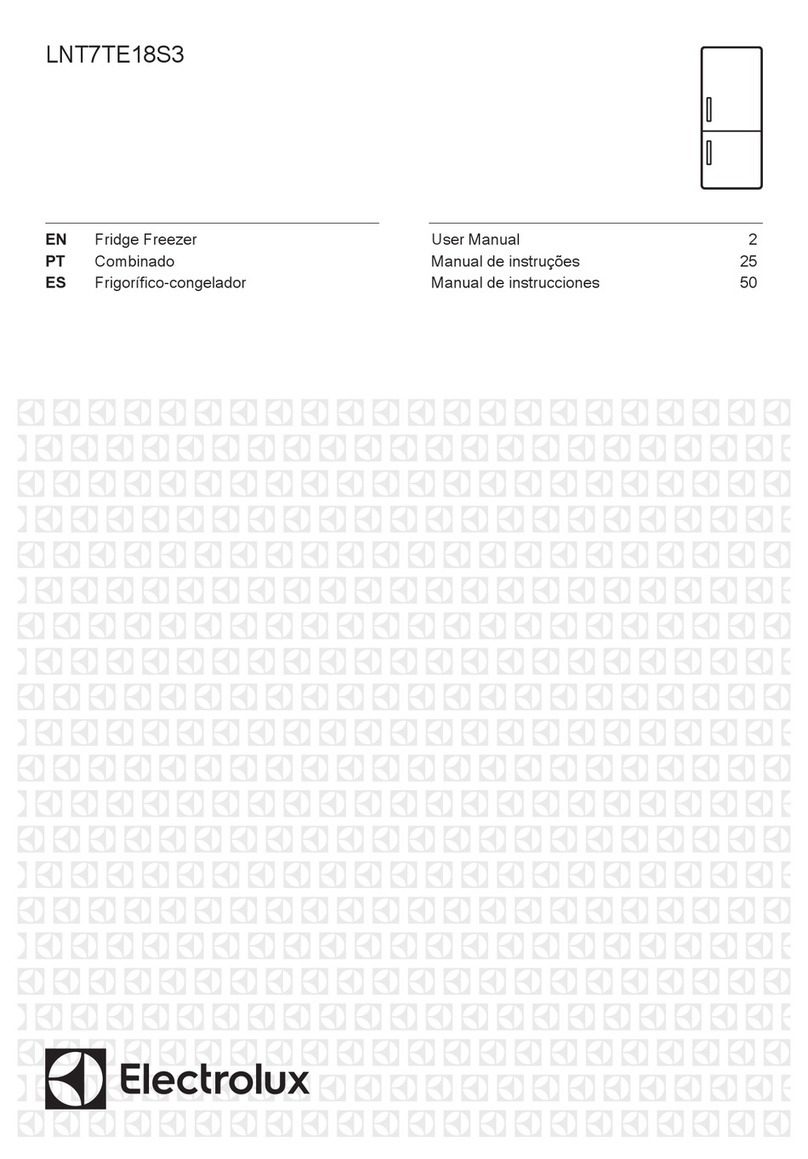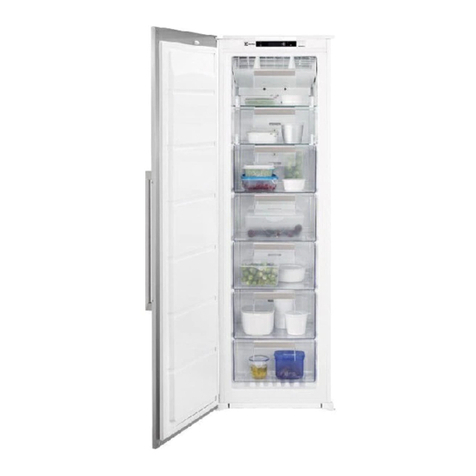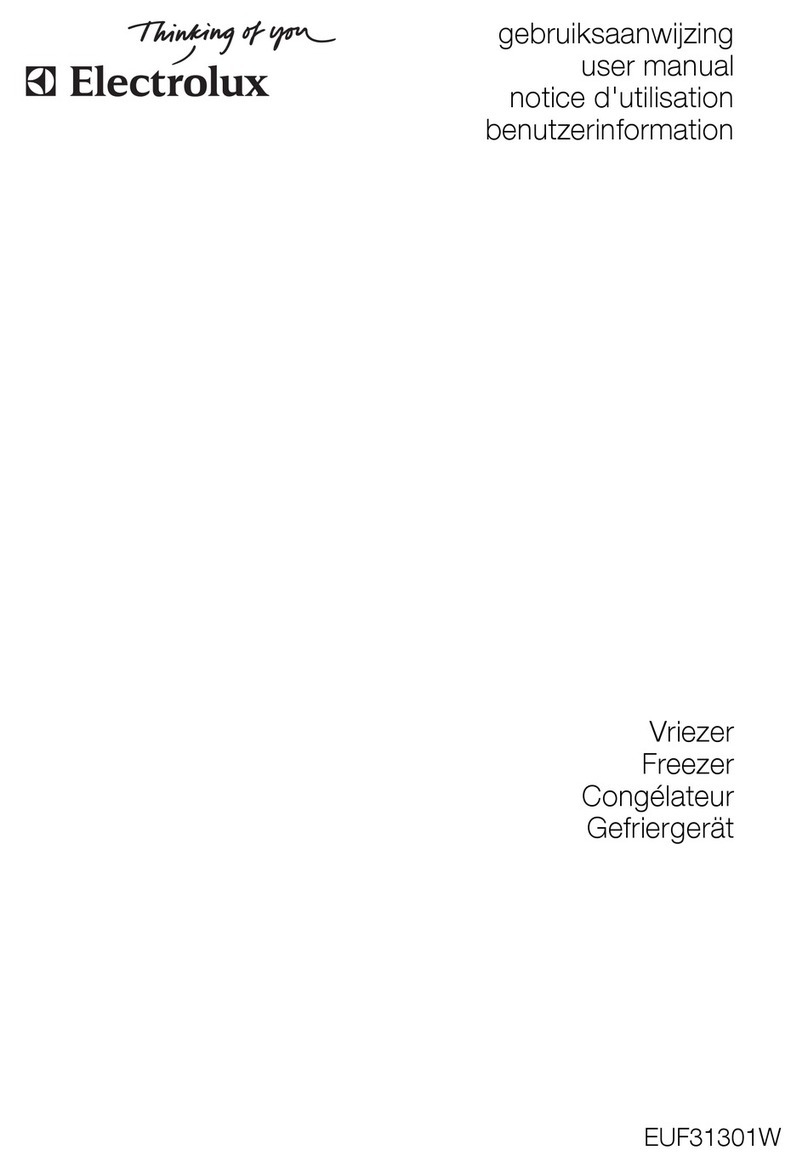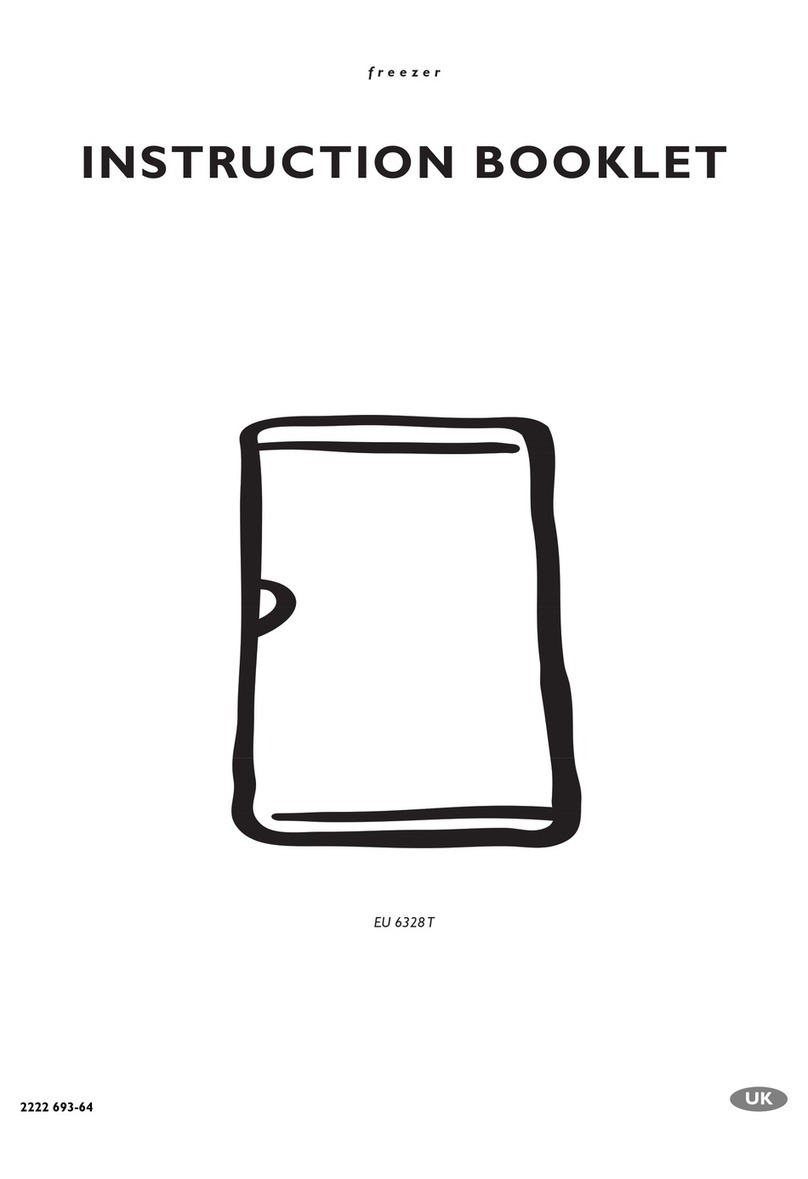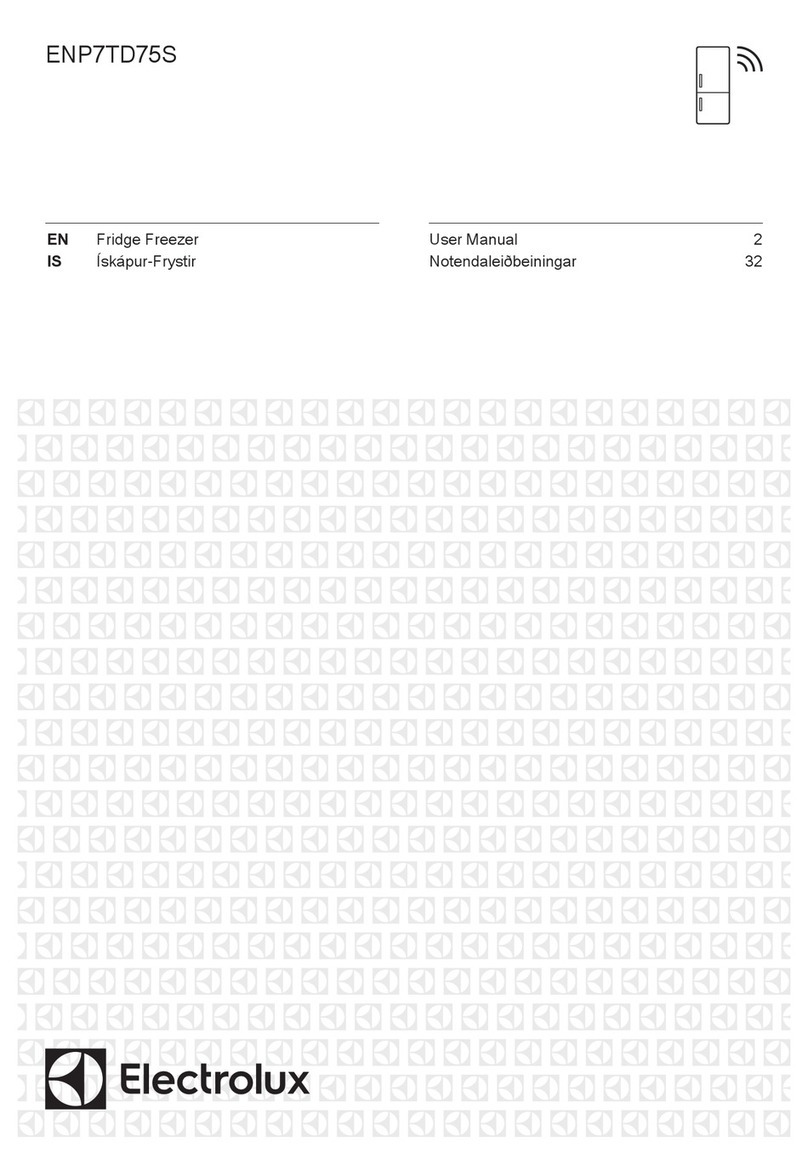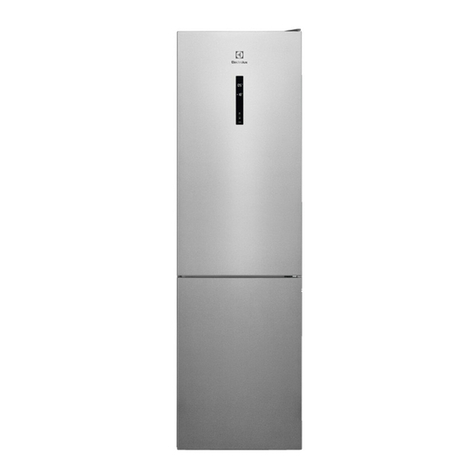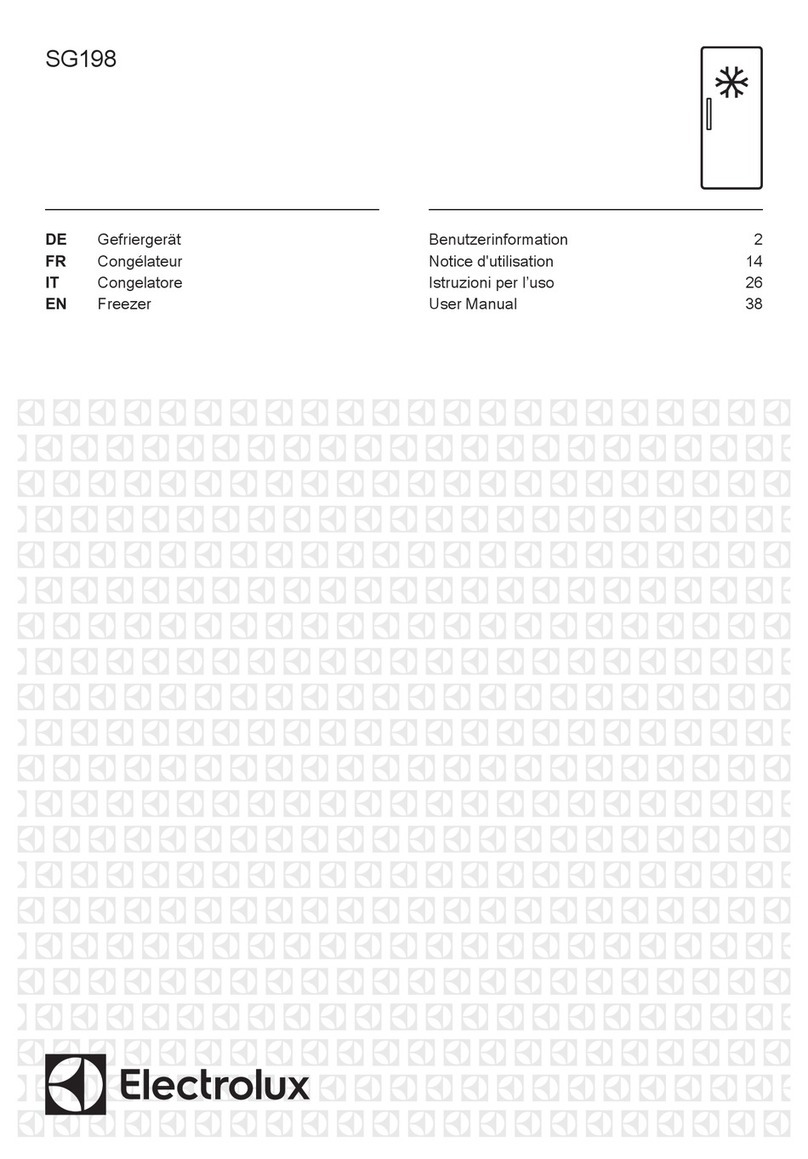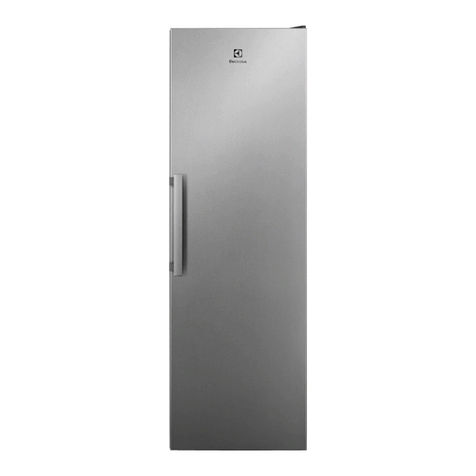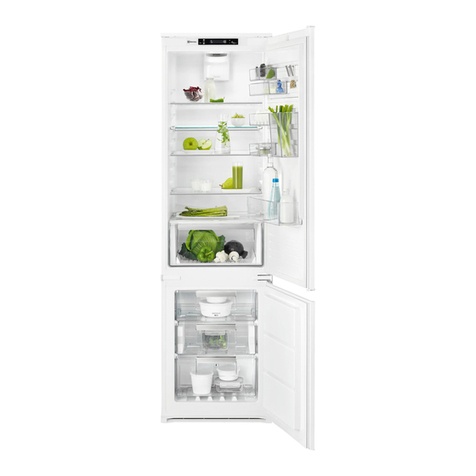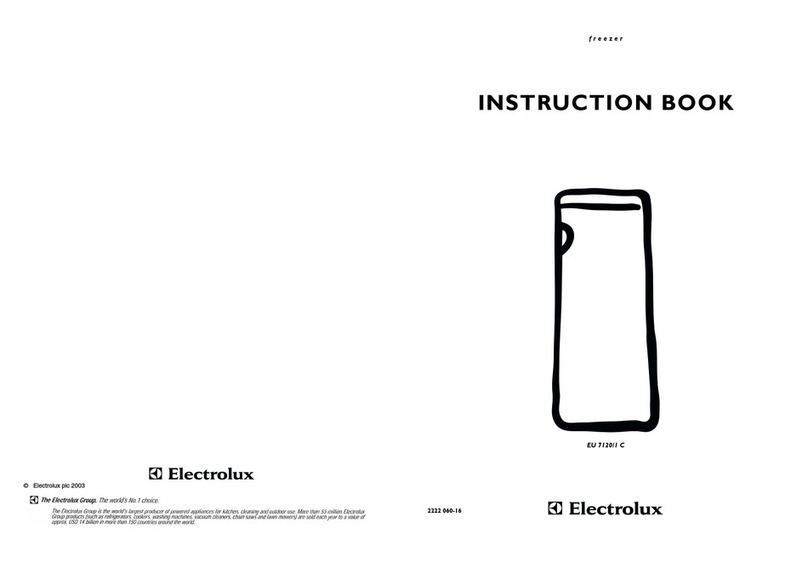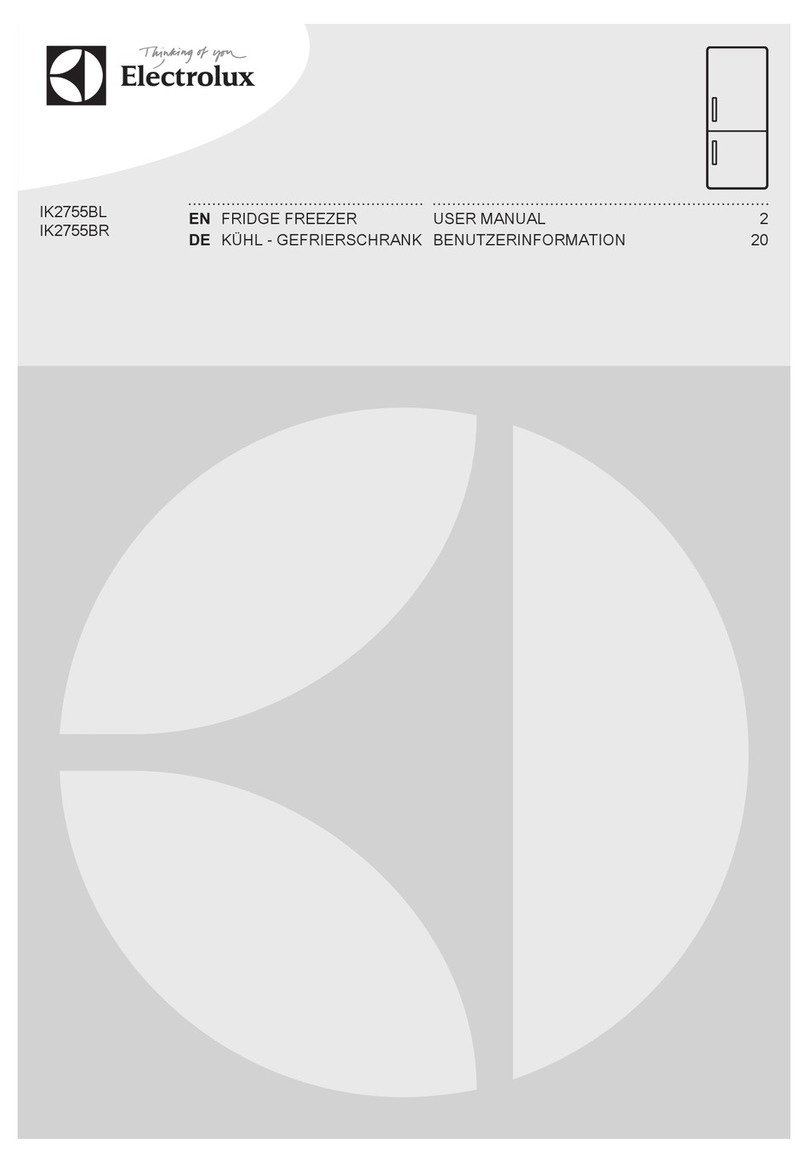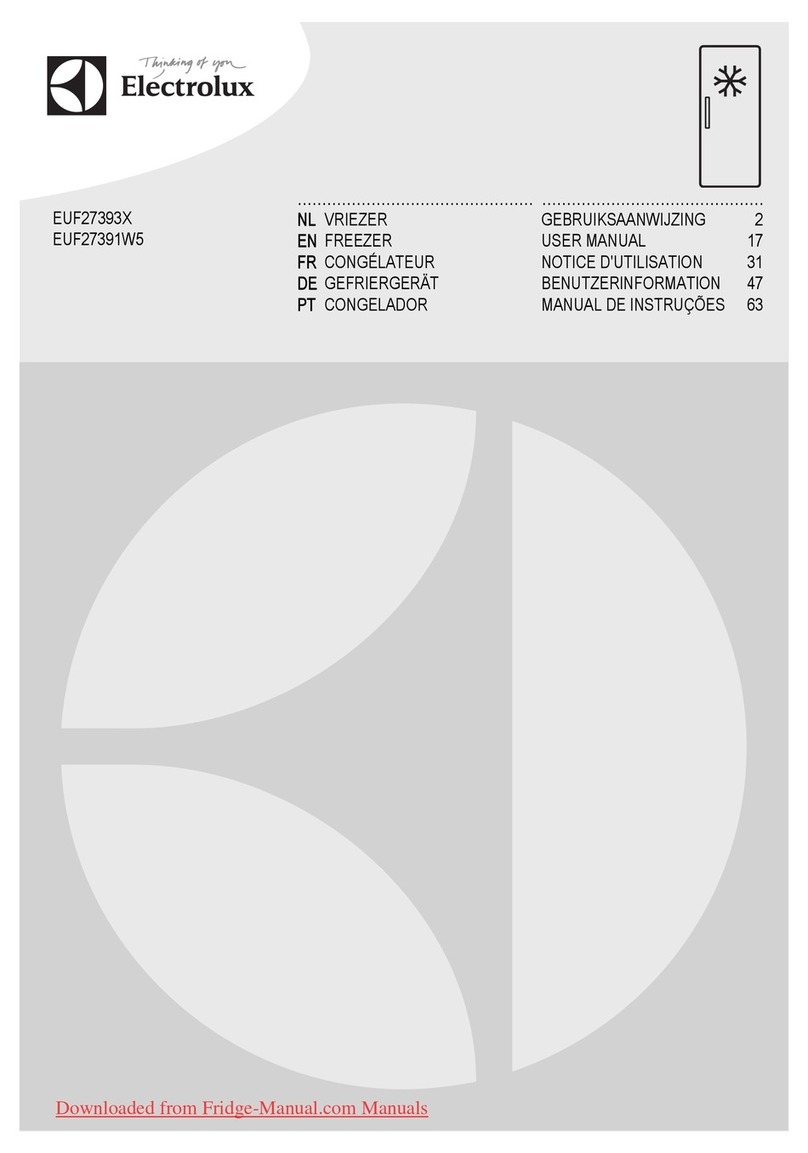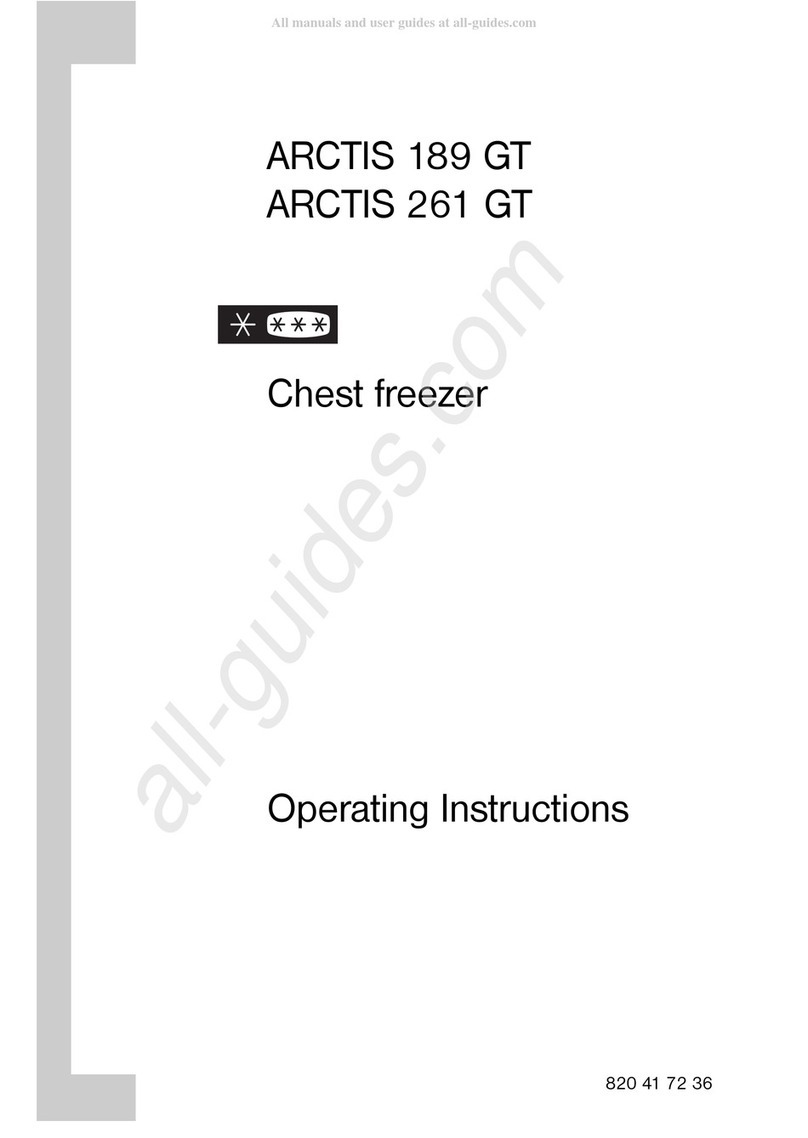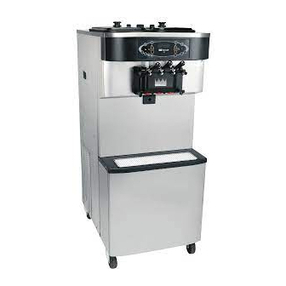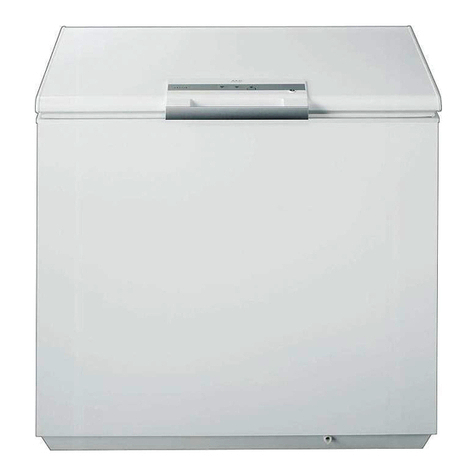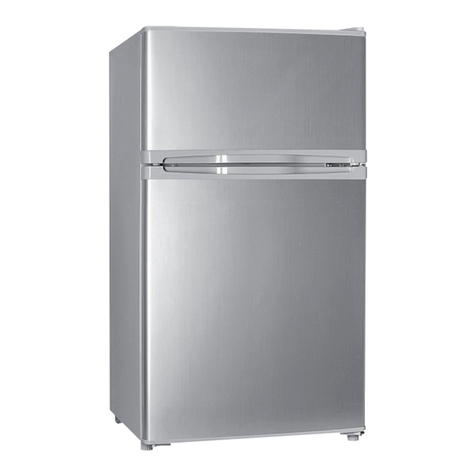9
GB
Therefore you should avoid installing your freezer in very
humid surroundings. The LOW FROST system minimizes
the amount of ice caused by the natural tem erature
cycle of the freezer. However, ice-build-u from other
sources is not reduced. The most im ortant other
sources are oorly wra ed food and warm air
introduced when the lid is o ened.
Therefore, it is im ortant to ensure that the lid isnt
o ened unnecessarily, and the lid is not obstructed by
acks of food when closed.
If food stored in the freezer is not wra ed ro erly,
humidity from the food will settle as ice on the freezer
walls. Food quality will also deteriorate, so ensure that
food ut in the freezer is wra ed well.
Maintenance and Cleaning. The LOW FROST system
does not need any maintenance or cleaning during
normal use. If needed the i e can be wi ed with a soft
cloth. Do not use any shar or iercing tools, as this may
damage the system.
THE ROLE OF THE PRESSURE
EQUALISATION VALVE (10)
The ressure equalisation valve installed in your freezer
automatically eliminates the ressure difference which
otherwise would make it very difficult or even im ossible
to o en the lid.
It may be ossible to hear the o eration of the valve as
the air flows in through the airing outlet in the rear wall of
the cabinet.
For a safe o eration, kee the two o enings of the valve
clear, do not cover them!
HELPFUL HINTS
STORAGE
Frozen food can be stored anywhere inside the
freezer, but should be ke t at least 5 mm below the
to edge. Never exceed the maximum storage time for
urchased frozen food. When you buy frozen food, make
sure that it has been stored at the correct tem erature. Do
not buy roducts which have wet or damaged ackaging.
Place urchased roducts in your freezer as quickly as
ossible. We recommend using an insulated bag to bring
such roducts home with you. Never lace bottles, warm
objects, or fizzy drinks in the freezer.
FREEZING
Only use fresh food of the best quality. Cool hot
dishes to room tem erature as quickly as ossible
before lacing them in the freezer. Wra food carefully in
freezer foil, or use the s ecial freezer boxes or bags
which are on the market. Divide food into small ortions
before freezing - this ensures that freezing is more ra id,
and means that you only need to defrost the amount
needed for immediate consum tion.
Remember that defrosted food must not be re-frozen.
However, dishes which have been made using defrosted
food may be frozen. Mark the freezer ackaging with the
date of freezing. We recommend kee ing a record of the
contents of your freezer. If freezing is too slow, the quality
of the food being frozen deteriorates. Consequently, do
not freeze larger amounts than stated in the freezers data
late. If you wish to freeze food several days in a row, the
maximum freezing ca acity stated er day is reduced by
about one-third. As far as ossible, kee the lid closed
during freezing. If you know nothing about home freezing,
we recommend that you urchase a book containing
advice and guidelines.
DEFROSTING
In general food should not be defrosted at room
tem erature, since this increases the risk of
bacteria growth. It is best to defrost large ortions of
meat or oultry in the refrigerator, and this also a lies to
food which is to be consumed as it is (e.g. fruit, butter
and sliced meat). Small ortions of food can be cooked
straight from the freezer. A good number of ready-to-
cook dishes can also be cooked without defrosting.
Always observe the instructions on roduct ackaging.
Bread tastes good when defrosted in a moderate oven.
Microwave ovens can be used for the ra id defrosting of
most frozen foods. Observe the instructions for use of
the microwave oven concerned.
ACCESSORIES (11)
S are baskets can be obtained from your local
Service Centre. The illustrations on this age
show how many baskets can be laced in the various
freezer models. Measure the length of your freezer and
find the a ro riate illustration. The number above each
illustration indicates its length in millimetres.
AINTENANCE
DEFROSTING (12)
The formation of frost on the inside of freezers cannot be
avoided. Frost is formed when moisture contained in the air
comes into contact with the cold surfaces of the freezer.
Consequently, the lid should only be o ened when
necessary, and it should never be left o en.
A thin layer of ice or frost does not affect the function of
the freezer adversely, and can be removed carefully
using the scra er rovided.
I PORTANT
Never use a knife or any other sharp implement to
remove frost.
When the frost or ice layer is 10-15 mm thick, the freezer
should be defrosted. We suggest that you defrost your
freezer when there is little or no food inside.
Switch off the current. Remove the contents of the
freezer, wra them in news a ers, and leave them in a
cold lace.
The s eed of defrosting can be increased by lacing one
or more bowls of hot (not boiling) water inside the freezer
and closing the lid. O en the lid after a while, and remove
the layer of ice carefully.
The defrost water can be collected in the artition wall as
shown in the drawing.
Do not try to s eed u defrosting by using anything other
than hot water, since this may damage the freezer. After
defrosting, clean the inside of the freezer.
